Yosemite for First-Timers: What You Need to Know
I’ve spent countless hours exploring the breathtaking Yosemite National Park, and I understand that planning your first trip there can be overwhelming. That’s why I’m excited to share my insider knowledge and expertise with you through this beginner’s guide to Yosemite National Park. If you’re planning a trip to Yosemite, this guide will provide you with everything you need to know to plan a successful trip. From what to expect during your drive to must-see attractions and safety tips, I’ve got you covered. By following this guide, you can relax and fully enjoy all that Yosemite has to offer.
Yosemite National Park is a natural wonder located in California’s Sierra Nevada Mountains. The park boasts iconic landscapes such as granite cliffs, waterfalls, and giant sequoia trees. To make the most of your visit, it’s essential to plan ahead. In this beginner’s guide, you’ll learn about the park’s history, how to get there, where to stay, what to see, and how to stay safe while exploring. Whether you’re a hiker, photographer, or simply a nature enthusiast, Yosemite National Park offers something for everyone.
In addition to the basics, I’ll share my personal recommendations and insider tips that will take your Yosemite National Park experience to the next level. From lesser-known trails to hidden gems, I’ll provide you with all the information you need to make your trip unforgettable. So keep reading to discover everything you need to know before you visit Yosemite National Park!
History and Background of Yosemite National Park
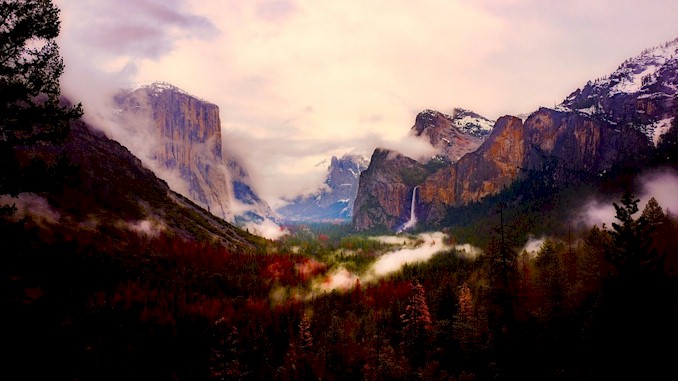
Yosemite National Park is a world-famous natural wonder located in the Sierra Nevada Mountains of California. Established in 1890, it covers an area of over 750,000 acres, making it one of the largest national parks in the United States. The park is renowned for its awe-inspiring landscapes, including towering granite cliffs, thundering waterfalls, and towering sequoia trees.
The park has a rich history that dates back thousands of years, long before it was established as a national park. The Ahwahneechee, a Native American tribe, have called Yosemite Valley home for over 4,000 years. They were the first to discover and appreciate the beauty of the park’s landscapes, and they continue to maintain a connection to the land to this day.
In the mid-19th century, the Yosemite Valley began to attract visitors from around the world. The paintings and photographs of the park’s landscapes by artists such as Ansel Adams and Albert Bierstadt helped to popularize Yosemite as a tourist destination. In 1864, President Abraham Lincoln signed the Yosemite Grant, which protected the valley and Mariposa Grove of giant sequoias. This was the first time in history that land was set aside for preservation and public use.
In 1890, Yosemite was designated as a national park by Congress, and it has been a popular destination for visitors ever since. Today, the park attracts over 4 million visitors each year, making it one of the most visited national parks in the United States.
Despite its popularity, Yosemite National Park faces many challenges, including overcrowding, climate change, and natural disasters. However, the National Park Service, along with conservation organizations and community groups, are working to protect and preserve this national treasure for generations to come.
Yosemite National Park is a world-renowned destination that has a rich history dating back thousands of years. From the Native Americans who first discovered and appreciated the beauty of the park’s landscapes to the artists and conservationists who helped to protect and popularize it, Yosemite has a unique and fascinating story to tell. Whether you’re a first-time visitor or a seasoned park-goer, understanding the history and background of Yosemite can enhance your appreciation and enjoyment of this magnificent natural wonder.
Planning Your Visit: Getting There, Where to Stay, and What to Bring
Yosemite National Park is a massive park, and I know how overwhelming it can be to make sure that your trip goes smoothly. Planning your visit ahead of time is essential to ensure that you get the most out of your trip. Here are some key things to keep in mind when planning your visit, including how to get there, where to stay, and what to bring.
Getting There:
If you’re traveling to Yosemite National Park from anywhere in the US, you have a few options to consider. The most common way to get to Yosemite is to fly into San Francisco International Airport or Sacramento International Airport, and then rent a car to drive to the park. The drive from San Francisco takes about 3-4 hours, while the drive from Sacramento takes about 2-3 hours. Alternatively, you can take a shuttle service from the airport to the park, but this can be a more expensive option.
Another option is to take Amtrak to Merced, which is the closest Amtrak station to the park. From Merced, you can take a YARTS bus to the park, which runs from Merced to Yosemite Valley and other areas of the park. Keep in mind that taking public transportation to the park can be more time-consuming, but it’s a great option for those who prefer not to drive or rent a car. Regardless of which option you choose, it’s important to plan ahead and allow enough time for travel to ensure a stress-free journey to Yosemite National Park.
Where to Stay:
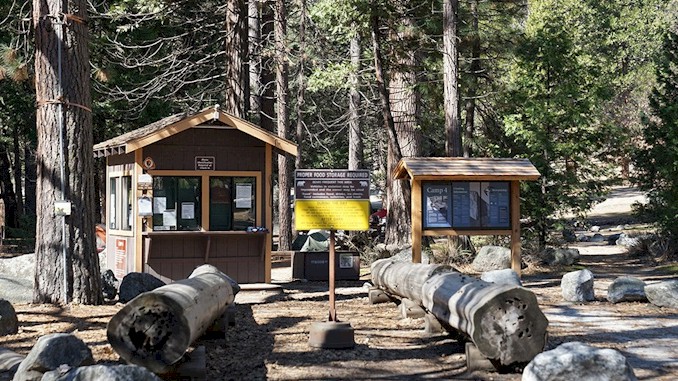
There are several options for accommodations within Yosemite National Park, including camping, cabins, lodges, and hotels. The park has 13 campgrounds, which range from primitive to full hook-ups. Reservations are recommended, and some campgrounds fill up quickly, especially during peak season.

If you’re looking for a more comfortable stay, there are several lodges and hotels within the park, including the Ahwahnee Hotel and the Yosemite Valley Lodge. Outside of the park, you’ll find more affordable options, including motels and cabins.
What to Bring:
Yosemite National Park has a diverse range of landscapes and climates, so it’s essential to pack accordingly. Bring comfortable hiking shoes, layers of clothing, a hat, and sunscreen. The park’s elevation ranges from 2,000 to over 13,000 feet, so it’s crucial to be prepared for all weather conditions.
If you’re planning on camping, be sure to bring a tent, sleeping bag, and cooking supplies. And if you’re planning on hiking, bring plenty of water, snacks, and a map or GPS device.
Other things to consider bringing include binoculars, a camera, and a flashlight. It’s also a good idea to bring bear-resistant food storage containers if you’re camping, as bears are common in the park and can be dangerous.
Planning your visit to Yosemite National Park is essential to ensure that you have a safe and enjoyable trip. From how to get there to where to stay and what to bring, taking the time to plan ahead will make all the difference. Be sure to do your research, make reservations early, and come prepared for all weather conditions to make the most of your Yosemite adventure.
Must-See Attractions in Yosemite National Park
Yosemite National Park is full of breathtaking natural wonders, and it can be tough to decide what to see and do during your visit. Here are some of the top must-see attractions in Yosemite National Park:
Yosemite Valley
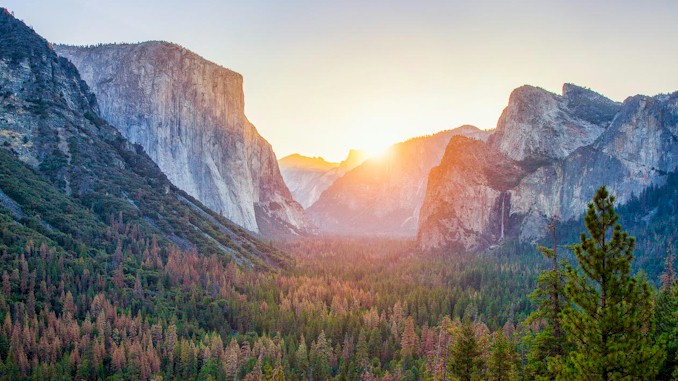
Yosemite Valley is one of the most popular and beautiful places within Yosemite National Park and it’s also one of my favorites. The valley is a stunning 7-mile long canyon surrounded by towering granite cliffs, meadows, and waterfalls. Some of the iconic landmarks within Yosemite Valley include Half Dome, El Capitan, and Yosemite Falls. You can enjoy a variety of activities in Yosemite Valley, including hiking, biking, rock climbing, and horseback riding. There are also several campgrounds and lodging options available within the valley, making it easy to explore this beautiful area of the park.
One of the most popular hikes in Yosemite Valley is the Mist Trail, which takes hikers past two of the park’s most famous waterfalls, Vernal Falls and Nevada Falls. The valley is also home to several meadows, including Cook’s Meadow and Sentinel Meadow, where visitors can relax and take in the stunning scenery. If you’re looking for a more leisurely way to explore Yosemite Valley, you can take a guided bus tour, which provides a narrated tour of the valley’s most iconic landmarks. Whatever your preference, Yosemite Valley is a must-see destination within Yosemite National Park.
Glacier Point
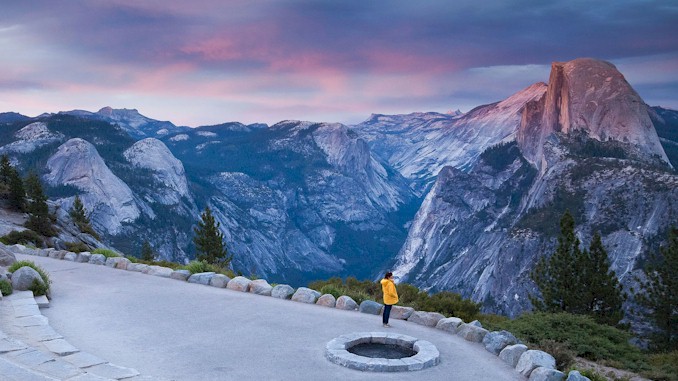
Glacier Point is one of the most iconic viewpoints in Yosemite National Park. The point offers stunning panoramic views of the Yosemite Valley, including Half Dome, Yosemite Falls, and Vernal and Nevada Falls. To get to Glacier Point, you can take a scenic 32-mile drive from the park’s South Entrance, or you can choose a shorter 16-mile drive from the park’s Badger Pass Ski Area. The drive can take up to an hour, depending on traffic and road conditions, but it’s definitely worth the effort.
In addition to the breathtaking views, Glacier Point is also a popular starting point for several hiking trails, including the Panorama Trail, which leads to the Yosemite Valley floor and offers amazing views of Half Dome and Nevada and Vernal Falls. Visitors can also explore the nearby Sentinel Dome, a popular hiking destination that offers beautiful views of the park’s stunning wilderness. Whether you’re an avid hiker or simply looking for a scenic spot to enjoy the views, Glacier Point is definitely worth a visit during your time in Yosemite National Park.
Mariposa Grove

Mariposa Grove is the largest sequoia grove in Yosemite National Park and is home to around 500 mature giant sequoias, including the famous Grizzly Giant, one of the largest and oldest trees in the world. Located on the park’s southern edge, the grove is easily accessible by car and features a network of trails that wind through the towering trees. You can take a leisurely stroll through the grove, marveling at the immense size and age of these ancient trees or embark on a longer hike to explore the more remote parts of the grove.
One of the most popular trails in Mariposa Grove is the Grizzly Giant Loop Trail, which is about 2 miles long and will take you past some of the grove’s most impressive trees, including the Grizzly Giant and the California Tunnel Tree, a giant sequoia that was tunneled through in the 19th century to allow visitors to pass through. The trail is rated as easy to moderate and offers breathtaking views of the surrounding forest and mountains. For those who want to learn more about the grove’s ecology and history, guided tours are also available, led by knowledgeable park rangers who share their expertise and insights with visitors.
There are also lots of butterflies in Mariposa Grove. The grove is named after the Mariposa lily, which is the state flower of California, but it is also home to several species of butterflies. In fact, the Mariposa Grove is one of the best places to see the California Tortoiseshell butterfly, which is a beautiful orange and black butterfly that is commonly found in the Sierra Nevada Mountains.
Tuolumne Meadows

Tuolumne Meadows is a high-elevation subalpine meadow located in the eastern section of Yosemite National Park. The meadow spans over 2,000 acres. It’s a popular destination for hikers, backpackers, and nature lovers, offering stunning views of the surrounding mountains and meadows.
One of the most popular activities in Tuolumne Meadows is hiking. The area offers a wide range of hiking trails, from easy walks around the meadow to challenging climbs up nearby peaks. Some of the most popular hikes are the Lembert Dome Trail, the Cathedral Lakes Trail, and the John Muir Trail. The meadow is also home to several backcountry campsites, making it a great basecamp for multi-day hiking trips. In addition to hiking, you can also enjoy fishing in the nearby streams and lakes, or simply relax and take in the stunning views of the Sierra Nevada Mountains.
Hetch Hetchy

Hetch Hetchy is a stunning reservoir located in the northwestern part of Yosemite National Park. The valley was once a glacially carved granite gorge with a meandering river flowing through it, but in the early 20th century, it was flooded and turned into a reservoir to provide water and hydroelectric power to San Francisco. Today, Hetch Hetchy remains a source of controversy, as many conservationists believe the valley should be restored to its natural state. Hetch Hetchy is a beautiful and unique destination within Yosemite National Park that I highly recommend.
Visitors to Hetch Hetchy can enjoy hiking trails that wind through the valley, offering views of the towering granite walls and the clear waters of the reservoir. One popular trail is the hike to Wapama Falls, which follows the path of the Hetch Hetchy Reservoir and crosses over several bridges before reaching the impressive waterfall. Along the way, hikers can spot wildlife such as deer, birds, and even an occasional bear. The trail is relatively flat and easy to navigate, making it accessible to hikers of all skill levels. In addition to hiking, visitors can also go fishing in the reservoir or take a guided tour to learn more about the history and ecology of Hetch Hetchy.
Hiking and Outdoor Activities: Insider Tips and Recommendations
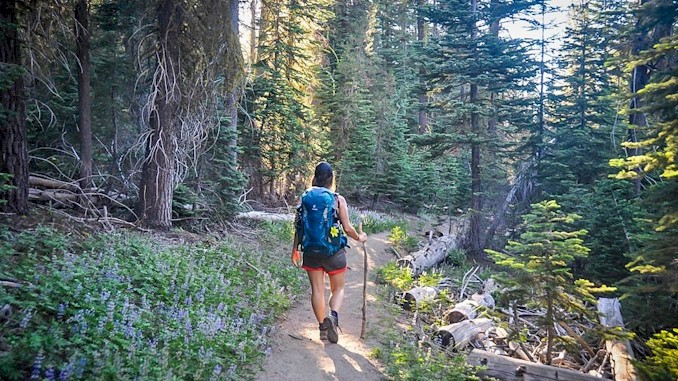
Yosemite National Park is a hiker’s paradise, with trails ranging from easy nature walks to strenuous multi-day backpacking trips. Here are some insider tips and recommendations to help you make the most of your hiking and outdoor adventure in Yosemite National Park:
- Plan Ahead: Before heading out on a hike, make sure to research the trail and check the weather forecast. It’s also important to bring plenty of water, food, and appropriate gear, including sturdy hiking boots and a map or GPS device.
- Best Hiking Trails: Yosemite National Park is home to several iconic hiking trails, including the Mist Trail to Vernal and Nevada Falls, the John Muir Trail, and the Half Dome Trail. However, there are also many lesser-known trails that offer breathtaking views and fewer crowds, such as the Panorama Trail and the Cathedral Lakes Trail.
- Outdoor Activities: In addition to hiking, Yosemite National Park offers a wide range of outdoor activities, including rock climbing, biking, fishing, and horseback riding. Visitors can also take a scenic drive along Tioga Road or explore the park’s many meadows and waterfalls.
- Wildlife Viewing: Yosemite National Park is home to a diverse range of wildlife, including black bears, mountain lions, and deer. Visitors can increase their chances of spotting these animals by heading out early in the morning or at dusk and being quiet and respectful while observing them.
- Safety Tips: While hiking and exploring the park, it’s important to follow basic safety tips, such as staying on designated trails, carrying bear spray, and being aware of your surroundings. It’s also important to respect the park’s natural resources and leave no trace behind.
Yosemite National Park is a hiker’s and outdoor enthusiast’s dream, with a wide range of trails, activities, and wildlife to explore. By planning ahead, following safety tips, and respecting the park’s natural resources, visitors can have a safe and memorable experience in this beautiful wilderness.
Staying Safe in Yosemite National Park: What You Need to Know
While Yosemite National Park is a beautiful and exciting place to visit, it’s important to be aware of potential safety risks and take steps to protect yourself and your loved ones. Here are some tips to help you stay safe while exploring Yosemite:
- Weather Safety: Yosemite’s weather can be unpredictable, with sudden changes in temperature, thunderstorms, and even snow. Always check the forecast before heading out and be prepared with appropriate clothing and gear.
- Wildlife Safety: Yosemite is home to a variety of wildlife, including black bears, coyotes, and mountain lions. To stay safe, it’s important to store food and trash properly, never approach wildlife, and carry bear spray in case of an encounter.
- Water Safety: Yosemite’s rivers, lakes, and waterfalls may be beautiful, but they can also be dangerous. Always follow posted signs and warnings, never swim alone, and be aware of slippery rocks and swift currents.
- Trail Safety: Yosemite’s trails can be steep, rocky, and sometimes challenging. Always stay on designated trails, watch your step, and be prepared for sudden changes in weather or terrain.
- General Safety: Other general safety tips include staying hydrated, carrying a map or GPS device, and informing someone of your planned route and expected return time.
- Emergency Situations: In case of an emergency, dial 911 or seek help from a park ranger or other trained professional. It’s important to have a basic understanding of first aid and wilderness survival skills in case of an unexpected situation.
While Yosemite National Park offers endless opportunities for adventure and exploration, it’s important to prioritize safety and be prepared for potential risks. By following these tips and guidelines, visitors can have a safe and enjoyable experience in this stunning natural wonderland.
By the way, if you see a moose in the road, it’s better to swerve and hit a ditch than hitting the moose. Hitting a moose is like hitting a wall. If you see a deer in the road, it’s recommended to hit the deer rather than swerve into a ditch.







